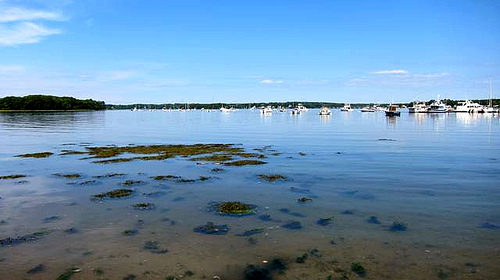Local cities work to combat pollution in Great Bay

April 22, 2021
The cities of Rochester, Dover and Portsmouth, N.H. have agreed to a new plan to curb pollution in the Great Bay. These three towns are responsible for about half of the nitrogen runoff into the bay.
The new controls are partly the result of work by the Conservation Law Foundation (CLF), an environmental advocacy organization that pushed for more stringent regulation around the amount of nitrogen towns can pollute into the bay.
According to the CLF, the three towns plan on making reasonable progress to reduce nitrogen runoff. These changes would include fertilizer modifications, oyster bed restoration and new catch basins.
Melissa Paly, the CLF Piscataqua waterkeeper said nitrogen is the worst pollutant in the bay, the reason being a process called eutrophication. This process causes excess algae blooms which can block out the sun and lead to low levels of oxygen in the water.
The New Hampshire group was inspired by a group of fishermen and lawyers who decided to try to clean up Hudson Bay, said Paly. “This fledgling group of fisherman and an attorney called themselves the Hudson River Keepers and it became a model for how people who are from a place and use a place become advocates for that place and it kind of became a movement,” said Paly. Nowadays there are hundreds of waterkeepers around the world.
The health of the Bay can be measured by the amount of Eelgrass in the estuary, said Paly. “We have lost about half of the acreage of the eelgrass in the estuary. Where we used to have lots of meadows of this plant carpeting the bottom we have either bare ground or ground that is covered by seaweed or algae and other plants that don’t provide the same kind of function,” said Paly.
Michael Joyal, Dover city manager said that the towns would be working together to decrease pollutants. “We have brought together and Dover is supporting a coalition of communities to make a variety of stormwater and wastewater improvements using best management practices that will help to reduce the flow of nutrients and other pollutants into the Great Bay estuary.” said Joyal. This cooperation takes the form of bi-yearly meetings between the towns, said Joyal.
The cooperation is exemplified by the permits the EPA has issued. “The Great Bay permit is unusual because it covers a group of 13 treatment plants, rather than a single facility; however, it is not the only permit to do so. Another example is a permit issued by Connecticut that includes nitrogen limits for a number of wastewater treatment plants in the Long Island Sound watershed.” said Ken Moraff, director of the Water Division at EPA Region 1.
Blaine Cox is the city manager of Rochester and broke nitrogen pollution into two categories: point and non-point, which are the main sources of nitrogen runoff into the bay as a result of human activity. Point source in Dover, said Cox, is caused by the outfall from the water treatment plant. Non-point comes from rainwater runoff.
While the cities and towns around Great Bay are making an effort to reduce pollution into the estuary, Paly said individuals can help too. “If you are a homeowner or a renter think very carefully about how you use the land around your house, what you put on the lawn,” said Paly. “Fertilizer, pesticides it all goes somewhere.”
Photo courtesy of NHPR.




















